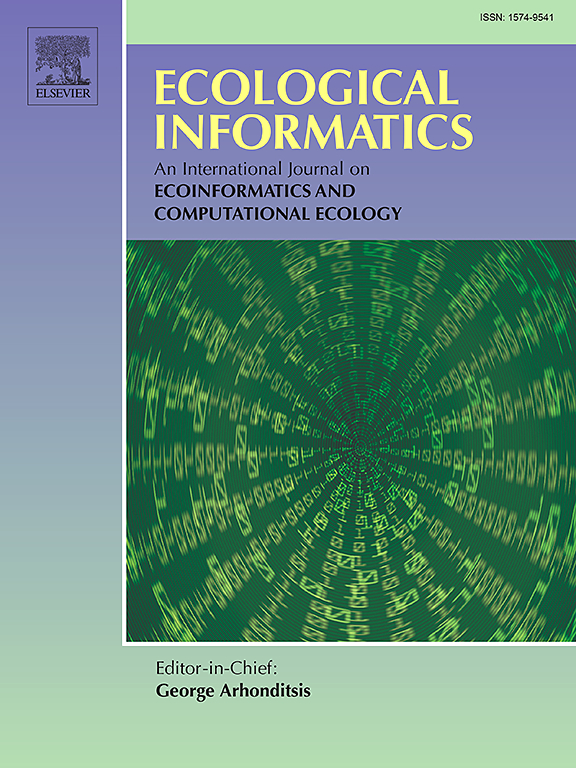Wave-turbulence decomposition and turbulence parameterization in aquatic wave environments using improved Synchrosqueezed Wavelet Transform (iSWT)
IF 7.3
2区 环境科学与生态学
Q1 ECOLOGY
引用次数: 0
Abstract
Accurate quantification of near-surface turbulence is essential for understanding the dynamics of turbulent mixing and mass transport in aquatic systems. However, field measurements of near-surface flow velocities often include contributions from surface gravity waves. For the quantification of turbulence and related transport processes, robust methods are needed to separate wave motion from the turbulent velocity fluctuations. In this study, we evaluated the performance of five different methods for wave-turbulence decomposition in estimating turbulent kinetic energy, Reynolds stress and turbulent kinetic energy dissipation rate. The methods include Ensemble Empirical Modal Decomposition (EEMD), Phase method (PH), Variational Mode Decomposition (VMD), Synchrosqueezed Wavelet Transform (SWT) and improved Synchrosqueezed Wavelet Transform (iSWT). We used these methods for a re-analysis of high-frequency velocity measurements from the water surface of the Kitinen River, Finland. The results show that the different methods remove the wave component to varying degrees, whereas the performance of the VMD method appeared insufficient. The estimated turbulent kinetic energy and Reynolds stresses were generally smaller than 30 % of those calculated from the unprocessed velocity measurements. In terms of energy spectra, the EEMD, PH, SWT and iSWT methods all provide a better removal of wave energy, but the EEMD and SWT methods resulted in substantial energy notches in the wave frequency band, resulting in a significant underestimation of the turbulent velocity fluctuations. In contrast, iSWT achieves the decomposition of wave and turbulence components by applying an optimal decomposition degree index , which maximizes the retention of turbulent velocity fluctuations. Application of the inertial dissipation method for estimating dissipation rates of turbulent kinetic energy from the spectra of separated turbulent velocities. The results showed that the iSWT method resulted in the longest inertial subrange, and allowed for most but also has very good robustness spectral fits for dissipation rates ranging from 1.33 × 10−7 W/kg to 1.06 × 10−5 W/kg. Using dissipation rate estimates from an advanced methods explicitly considering wave-turbulence interactions as a reference, the iSWT method showed the closest agreement, whereas the dissipation rates estimated from velocities processed by the other four methods were generally lower. The newly proposed method is able to provide accurate estimates of dissipation rates by robustly separating the turbulence from wave-affected velocities compared to the four tested existing methods.
基于改进同步压缩小波变换(iSWT)的波浪湍流分解与湍流参数化
近地表湍流的精确量化对于理解水生系统中湍流混合和质量输运的动力学至关重要。然而,近地表流速的现场测量通常包括地表重力波的贡献。对于湍流和相关输运过程的量化,需要稳健的方法来分离波动和湍流速度波动。在这项研究中,我们评估了五种不同的波浪湍流分解方法在估计湍流动能、雷诺应力和湍流动能耗散率方面的性能。方法包括集合经验模态分解(EEMD)、相位法(PH)、变分模态分解(VMD)、同步压缩小波变换(SWT)和改进同步压缩小波变换(iSWT)。我们使用这些方法对芬兰基蒂宁河水面的高频速度测量进行了重新分析。结果表明,不同的方法对波分量的去除程度不同,而VMD方法的效果则有所不足。估计的湍流动能和雷诺应力通常小于未经处理的速度测量结果的30%。在能量谱方面,EEMD、PH、SWT和iSWT方法都能较好地去除波浪能量,但EEMD和SWT方法在波频带中存在大量的能量缺口,导致湍流速度波动的严重低估。相比之下,iSWT通过应用最优分解度指标点来实现波浪和湍流分量的分解,最大限度地保留了湍流速度波动。惯性耗散法在分离湍流速度谱中估计湍流动能耗散率的应用。结果表明,iSWT方法产生了最长的惯性子范围,并且在耗散率为1.33 × 10−7 W/kg至1.06 × 10−5 W/kg的范围内允许大多数,但也具有非常好的鲁棒性谱拟合。利用一种明确考虑波湍流相互作用的先进方法估计的耗散率,iSWT方法显示出最接近的一致性,而其他四种方法处理的速度估计的耗散率通常较低。与现有的四种测试方法相比,新提出的方法能够通过稳健地将湍流与波影响速度分离开来,从而提供准确的耗散率估计。
本文章由计算机程序翻译,如有差异,请以英文原文为准。
求助全文
约1分钟内获得全文
求助全文
来源期刊

Ecological Informatics
环境科学-生态学
CiteScore
8.30
自引率
11.80%
发文量
346
审稿时长
46 days
期刊介绍:
The journal Ecological Informatics is devoted to the publication of high quality, peer-reviewed articles on all aspects of computational ecology, data science and biogeography. The scope of the journal takes into account the data-intensive nature of ecology, the growing capacity of information technology to access, harness and leverage complex data as well as the critical need for informing sustainable management in view of global environmental and climate change.
The nature of the journal is interdisciplinary at the crossover between ecology and informatics. It focuses on novel concepts and techniques for image- and genome-based monitoring and interpretation, sensor- and multimedia-based data acquisition, internet-based data archiving and sharing, data assimilation, modelling and prediction of ecological data.
 求助内容:
求助内容: 应助结果提醒方式:
应助结果提醒方式:


